Abstract
Altogether 94 patients with perirectal abscesses and/or fistulae in ano were tested for lymphogranuloma venereum in a Washington, D.C., clinic. They included men and women of low socio-economic status, many of the men being overt psycho-sexual hermaphrodites. The findings were compared with those in a control group of similar sex distribution (females, male homosexuals, male heterosexuals). All persons in the study were tested for lymphogranuloma venereum by the complement-fixation and Frei tests. Homosexuals and persons with rectal lesions were also examined by proctoscopy.
Among other findings, a significantly higher frequency of Frei reactors or positive complement-fixation reactions was observed among patients (both male and female) with abscesses than among the controls and among male homosexuals than heterosexuals.
The author concludes that lymphogranuloma venereum should be excluded in the differential diagnosis of perirectal abscess and fistual in ano, that homosexuals should be routinely tested for lymphogranuloma venereum, and that sexual perversion should be considered in male patients with ano-rectal disease of lymphogranuloma venereum origin.
Full text
PDF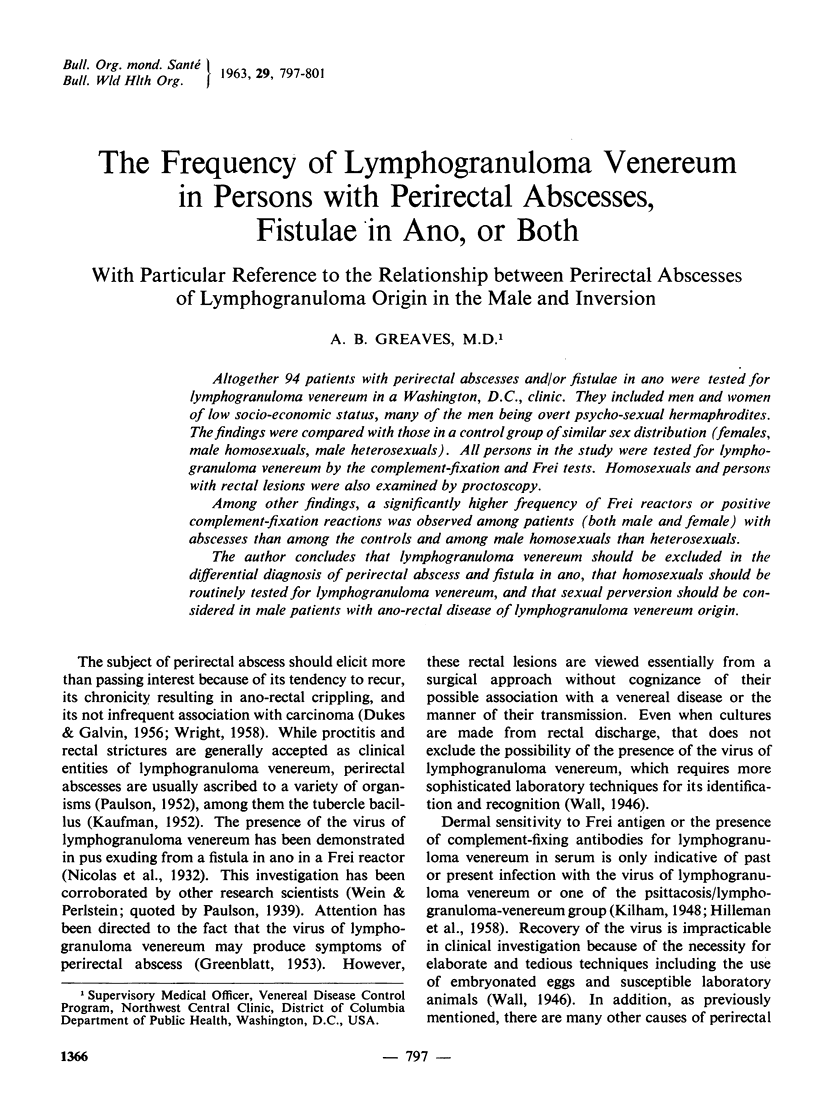
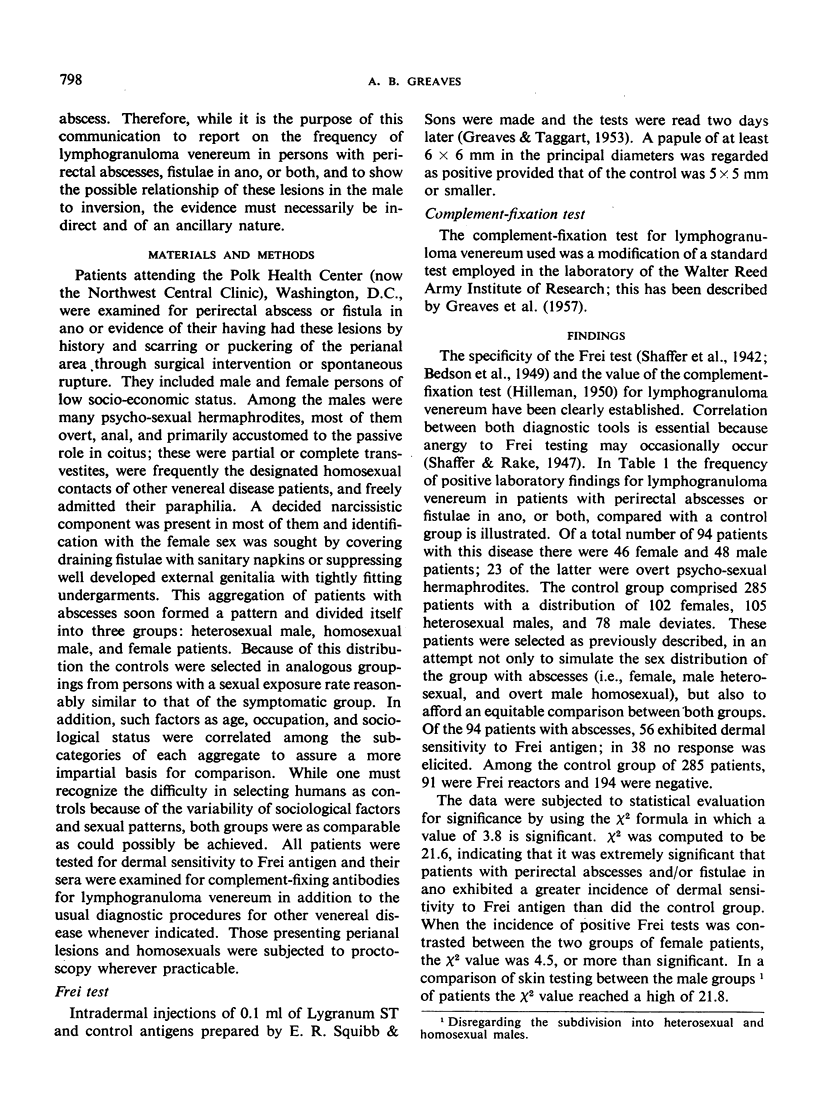
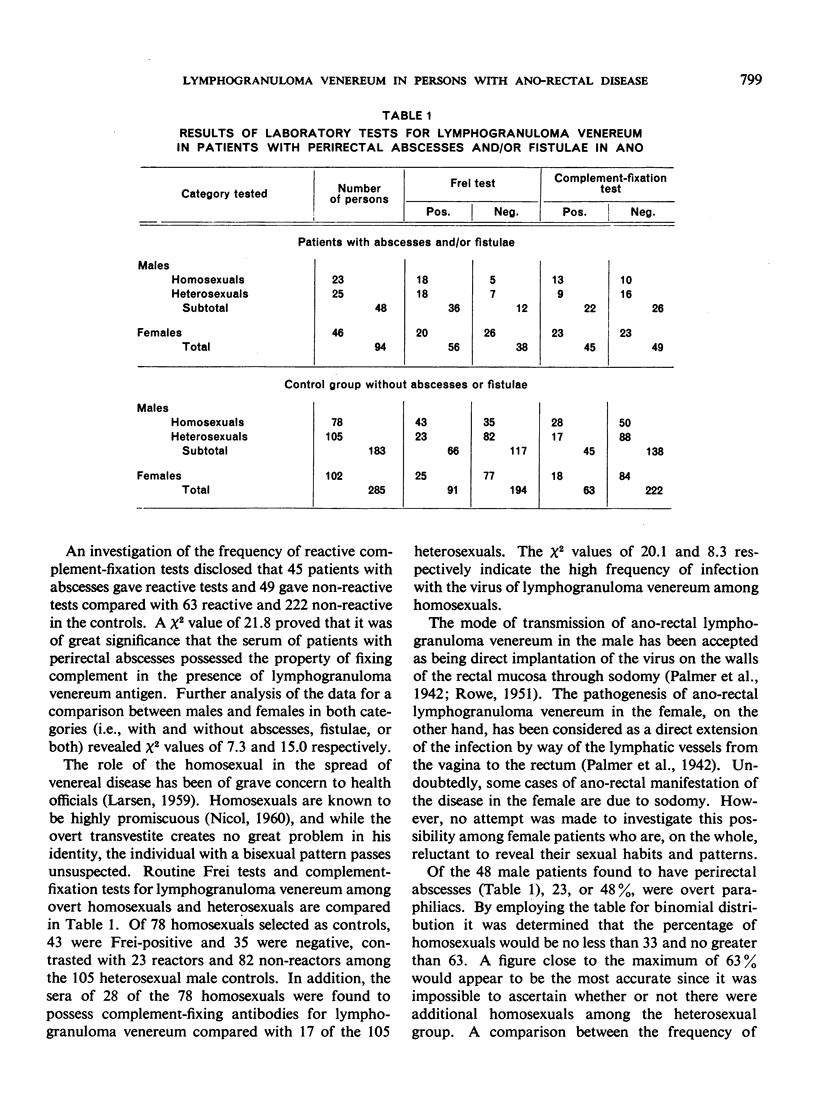
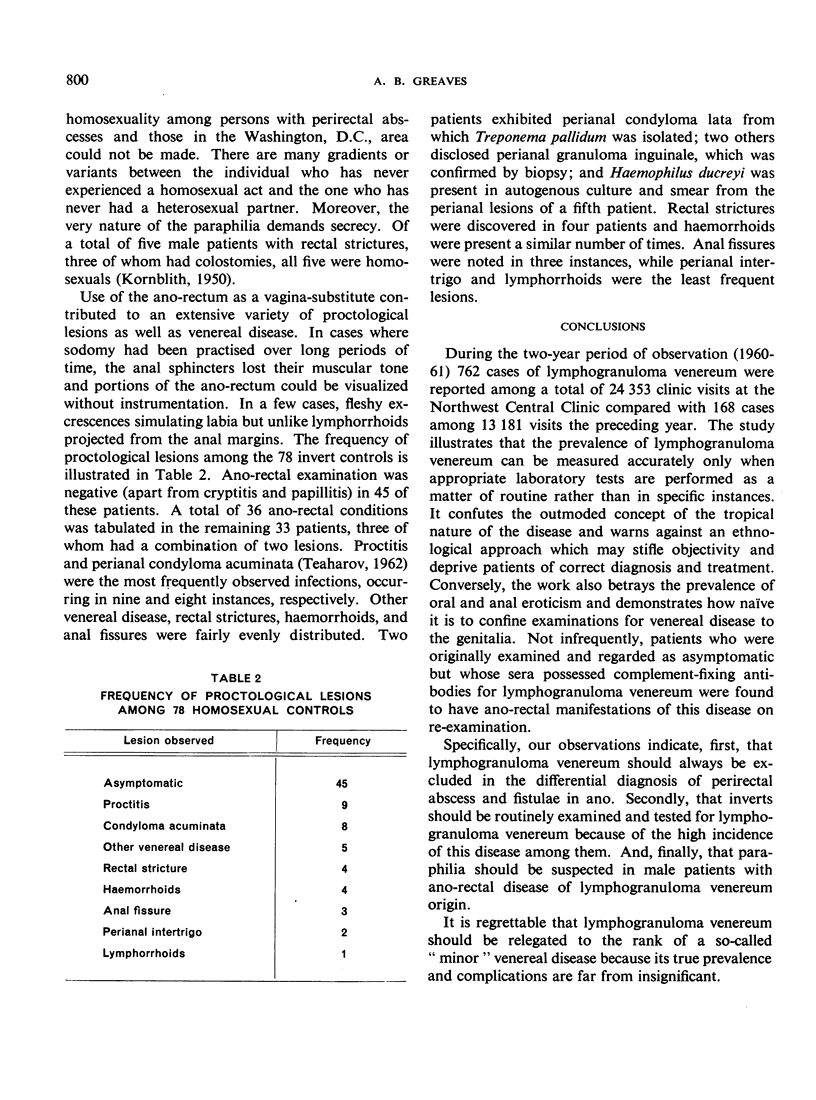
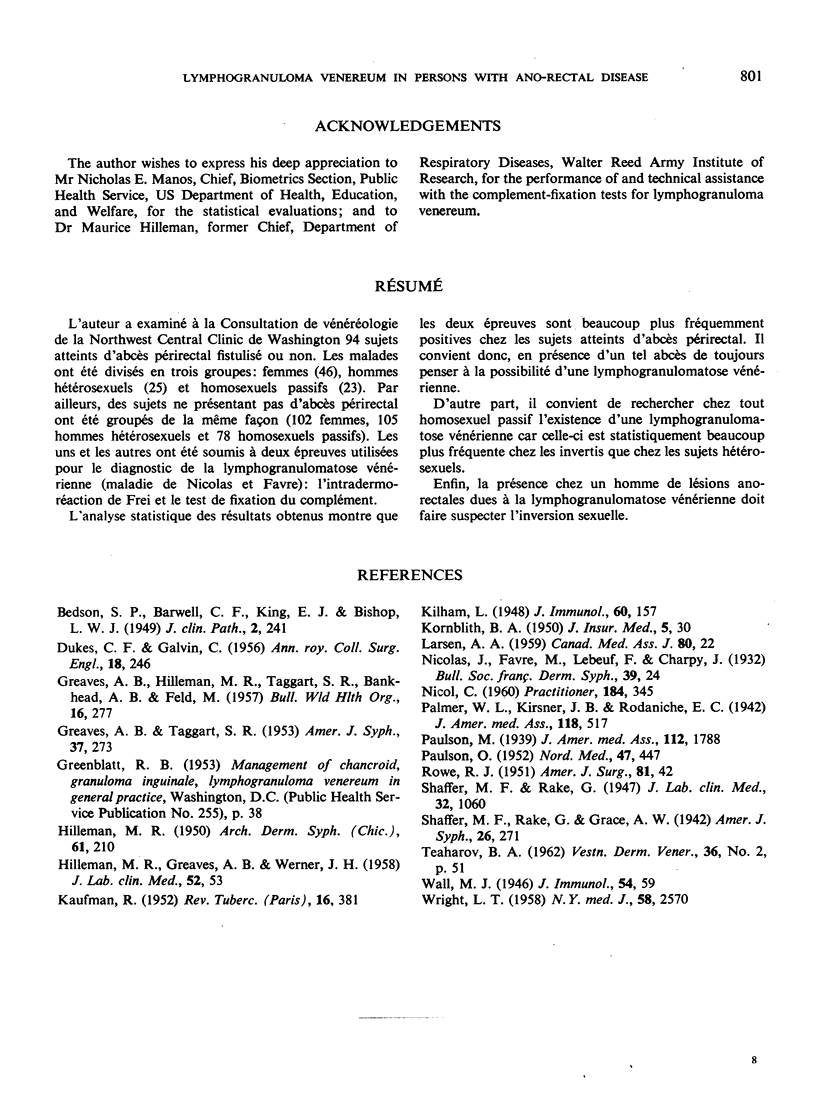
Selected References
These references are in PubMed. This may not be the complete list of references from this article.
- BEDSON S. P., BARWELL C. F. The laboratory diagnosis of lymphogranuloma venereum. J Clin Pathol. 1949 Nov;2(4):241–249. doi: 10.1136/jcp.2.4.241. [DOI] [PMC free article] [PubMed] [Google Scholar]
- DUKES C. E., GALVIN C. Colloid carcinoma arising within fistulae in the anorectal region. Ann R Coll Surg Engl. 1956 Apr;18(4):246–261. [PMC free article] [PubMed] [Google Scholar]
- GREAVES A. B., HILLEMAN M. R., TAGGART S. R., BANKHEAD A. B., FELD M. Chemotherapy in bubonic lymphogranuloma venereum: a clinical and serological evaluation. Bull World Health Organ. 1957;16(2):277–289. [PMC free article] [PubMed] [Google Scholar]
- GREAVES A. B., TAGGART S. R. Serology, Frei reaction, and epidemiology of lymphogranuloma venereum. Am J Syph Gonorrhea Vener Dis. 1953 May;37(3):273–282. [PubMed] [Google Scholar]
- HILLEMAN M. R., GREAVES A. B., WERNER J. H. Group-specificity of psittacosis-lymphogranuloma venereum group skin test antigens in lymphogranuloma venereum patients. J Lab Clin Med. 1958 Jul;52(1):53–57. [PubMed] [Google Scholar]
- KORNBLITH B. A. Lymphogranuloma venereum and granuloma inguinale. J Insur Med. 1950 Mar-May;5(2):30–32. [PubMed] [Google Scholar]
- NICOL C. Homosexuality and venereal disease. Practitioner. 1960 Mar;184:345–349. [PubMed] [Google Scholar]
- POULSEN O. Analabscesser og analfistler; behandlingsresultater. Nord Med. 1952 Apr 4;47(14):447–450. [PubMed] [Google Scholar]
- ROWE R. J. Evaluation of chloromycetin as an adjunct to the surgical management of lymphogranuloma venereum and segmental ulcerative colitis. Am J Surg. 1951 Jan;81(1):42–54. doi: 10.1016/0002-9610(51)90179-1. [DOI] [PubMed] [Google Scholar]


